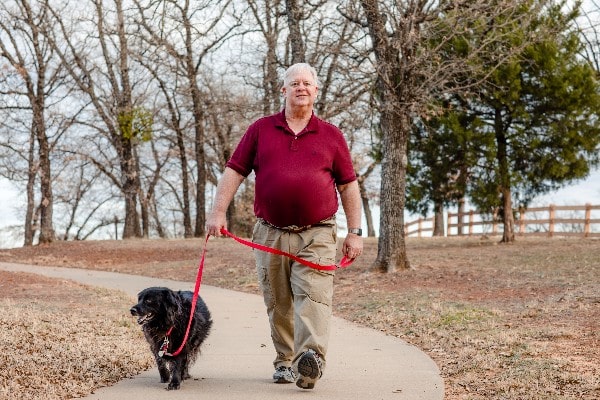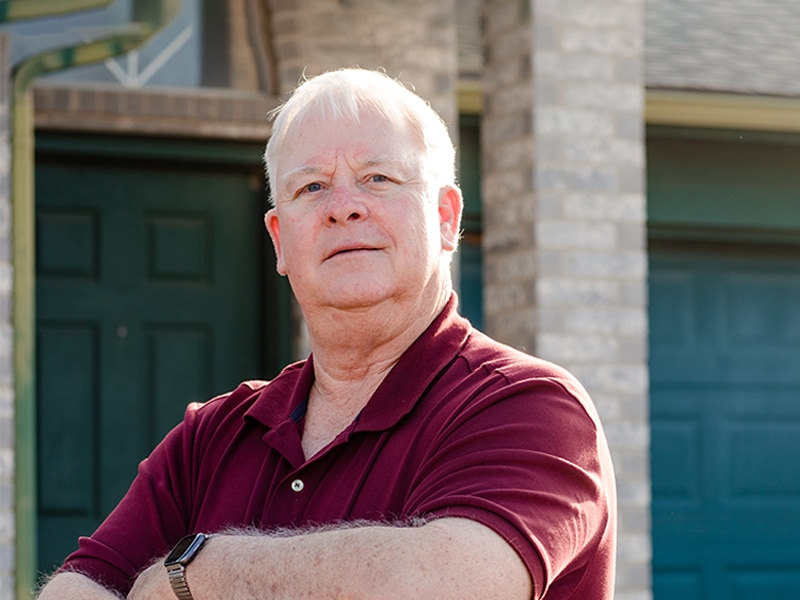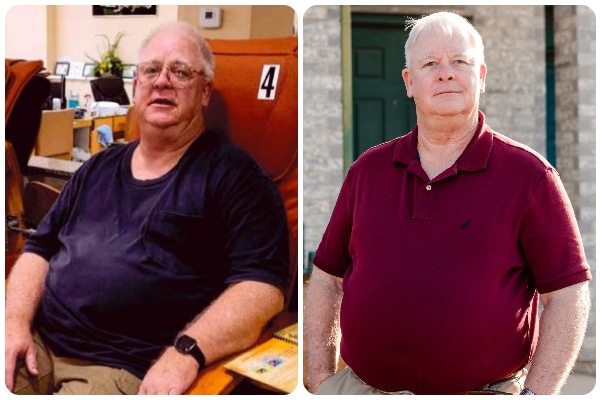Doug Jones decided to try a new approach to reach his weight-loss goals and overcome years of bad habits and health problems, including three heart attacks.
At age 64, the retired widower weighed 350 pounds and was diagnosed with high blood pressure and diabetes. He suffered a series of heart attacks in recent years and had back pain from spinal stenosis.
“I was running out of options,” says Doug, who struggled with fad diets and didn’t want surgery. “Actually, I was getting so depressed thinking about it, I’d almost given up. I needed something to help me.”
It just so happened that Methodist Mansfield Medical Center — the same hospital that helped Doug survive his heart attacks and get through back surgery — had recently launched a new weight loss and wellness center, led by Nancy Georgekutty, MD, family and obesity medicine specialist on the hospital’s medical staff. The program offers a nonsurgical option for patients hoping to lose weight.
After decades of working down the street from Methodist Mansfield and receiving care there, Doug decided to place his trust in this new program. And although apprehensive at first, Doug says his doubts dissolved after seeing the results.
“I started losing weight right away, which is always encouraging. Every time I go in for an appointment, we work on something new,” he says.
In six months’ time, Doug shed about 50 pounds, improved his blood pressure and blood sugar levels, and found a new outlook on life. He was even inspired to decorate his house for Halloween and Christmas for the first time in 15 years.
“I’ve got much more energy now, and I get up and do things that I never did before. This program is working for me, and that makes me happy.” — Doug Jones
GETTING STARTED
The first step of the process was to get an accurate measure of Doug’s health and daily routine, Dr. Georgekutty says. She went over Doug’s medical history and performed a body composition scan, which examines more than just weight and body mass index (BMI).
“It looks at what their body is actually composed of — how much fat do they have? How much water? How much skeletal muscle? It helps me formulate a plan tailored to a patient’s specific needs,” Dr. Georgekutty explains.
Doug also met with registered dietitian Lauren McCarthy, MS, RD, LD, and completed a lifestyle quiz to see what type of behaviors were underlying his eating patterns.
Before his weight loss journey, Doug said, he was used to staying up late and snacking, then sleeping in and skipping breakfast the next day. One of the first things he tackled under McCarthy’s guidance was sticking to a structured routine of eating regular meals and going to bed earlier.
“In our one-on-one sessions, I emphasize to patients the importance of being 1% better every day, rather than trying to make all of these changes at once,” McCarthy says. “That way, their progress compounds and gives them motivation.”

Much of McCarthy’s work is geared toward educating patients and dismantling their misconceptions about diet and nutrition.
“Weight loss isn’t as simple as ‘calories in, calories out.’ You can have flexibility in your life and enjoy what you like. It doesn’t have to be super restrictive and confining,” she says.
Doug’s growing knowledge of triglycerides, salt intake, and nutrition guidelines has helped him be more mindful and make smarter choices each day.
“My eating and sleeping habits were terrible,” he says, “and now they’ve turned into a more structured routine.”
Take our free weight health risk assessment to learn more about your risk, and to take action to prevent future complications. Visit MethodistHealthSystem.org/
A SUSTAINABLE APPROACH
Rather than fixating on the number on the scale, Dr. Georgekutty and McCarthy directed Doug to set small, achievable behavioral goals.
“I don’t want to set patients on a course that is unsustainable,” Dr. Georgekutty says. “We want our program to be about lifestyle modifications that fit each individual person. It’s not a standard one-size-fits-all plan.”
Using food diaries and fitness tracker apps, Doug has built an arsenal of tools to help him keep on top of his health. He says he’s walking his dog Dallas more and has gotten interested in water aerobics, a low-impact form of exercise that doesn’t aggravate his back pain.

Dr. Georgekutty says Doug’s new approach to physical activity, sleep, and diet has been transformative
“We’ve decreased the amount of insulin that he was requiring, and his blood pressure has fallen to a much healthier range,” she explains. “He’s gotten compliments from his sister and neighbors, so I’ve seen his confidence grow. When he comes to visit now, there’s just an extra ‘oomph’ in his step.”
Doug says the experience he’s gained from the program has inspired him to try more things that he felt too discouraged to pursue in the past: dating, traveling, and exploring his community in Arlington.
“It’s been a mental change, and I feel better,” he says. “I’m really enthusiastic. I’m making progress, and I feel good about the future.”







